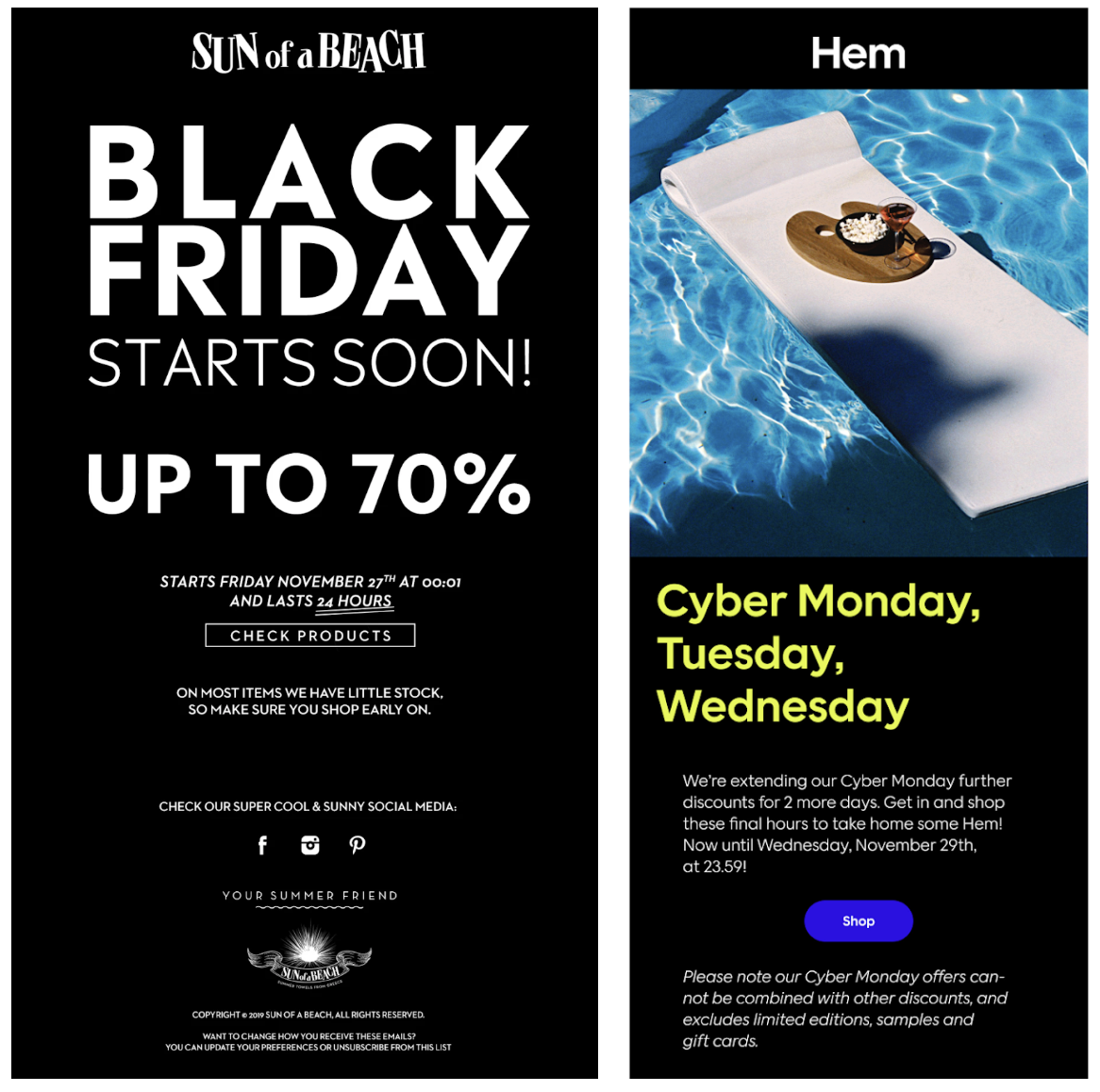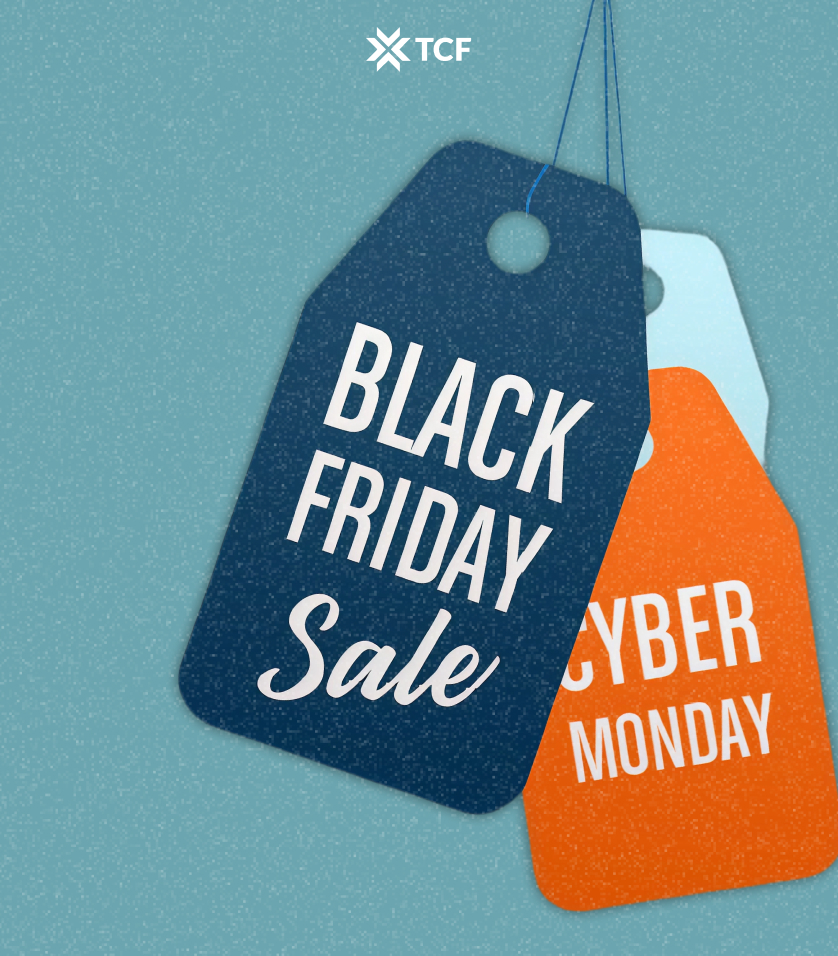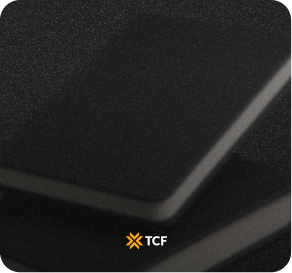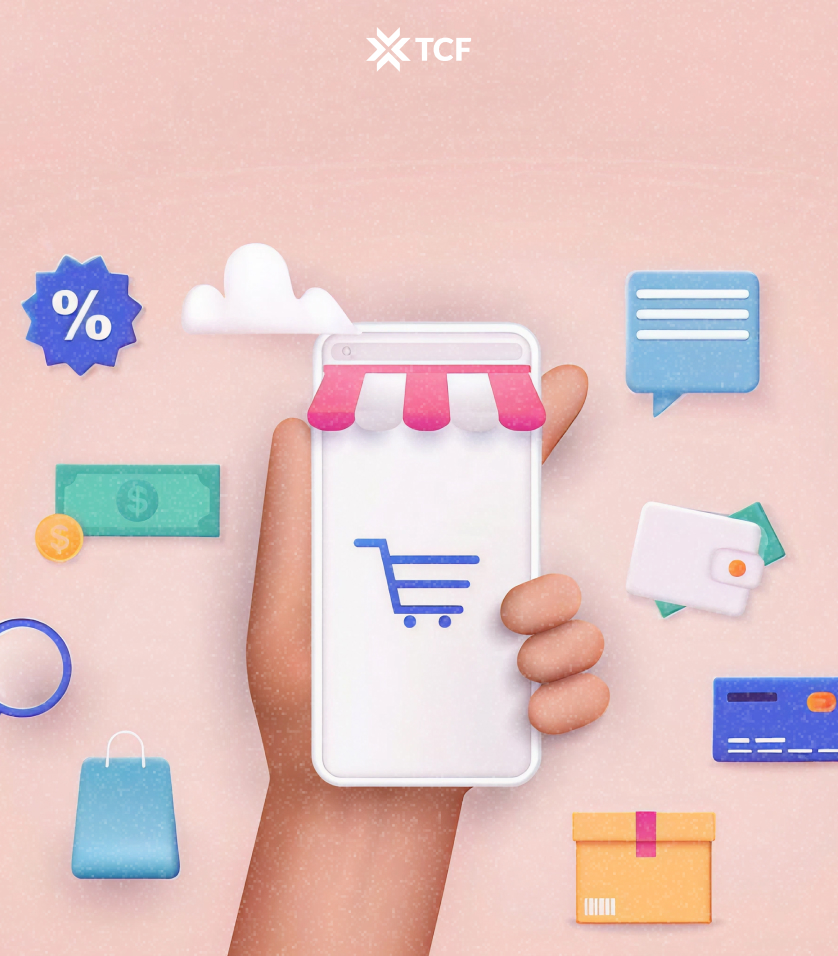For most DTC brands, Black Friday and Cyber Monday are less a sales weekend and more a stress test. It’s the moment every campaign, ad set, and email flow has been quietly building toward all year. The pressure is familiar: ad costs spike, inboxes overflow, and every team member suddenly becomes an expert in discount psychology.
But the brands that thrive are the ones that prepare with precision. They know when to tease, when to drop, and how to stretch momentum without burning out their audience or their team.
This guide breaks down how DTC brands should actually prepare: how they plan offers, time campaigns, align teams, and manage the chaos without losing their margins (their minds). It’s built for marketers who’ve seen one too many “start early” articles and want something that feels real, strategic, and field-tested.
Let’s get into how smart DTC brands make Black Friday and Cyber Monday work for them instead of against them.
[[cta10]]
How to Set DTC Black Friday Goals, Margins, and Offer Strategy
Black Friday and Cyber Monday prep starts long before the first teaser email hits inboxes. The strongest brands treat it like a math problem before it becomes a creative one. Every decision (how deep to discount, when to launch, what to bundle) depends on one thing: knowing your numbers.
The process begins with clarity. What’s the goal this year? Is it pure revenue, margin protection, or customer acquisition? Most brands can’t have all three. The mistake is trying. Set tiered targets early: one for topline revenue, one for new customers, and one for returning ones. This keeps pricing realistic and messaging consistent across channels.
Margins come next. Before approving any “flash sale” idea, you should model it against last year’s data and forecast ad spend. If the discount wipes out profit once CAC rises, it’s a liability. The smartest brands build guardrails, giving marketing flexibility without losing financial control.
Finally, the offer strategy. The goal isn’t to win with the loudest discount but the best structure. Tiered bundles, limited editions, and giftable sets consistently outperform sitewide markdowns because they feel curated. Treat your BFCM plan like a value ladder and you’ll end up with higher AOV, better retention, and fewer headaches once December hits.
Black Friday and Cyber Monday Timeline for DTC Brands
Black Friday and Cyber Monday take weeks of planning before they ever look effortless. The brands that move calmly through the chaos are the ones that pace themselves. You should too. Think of your campaign as a sequence. Each stage builds momentum for the next.
Use this timeline as your Black Friday checklist: a practical way to stay organized as the pressure builds and deadlines start overlapping.
Phase 1: Warm-Up (8-10 Weeks Out)
Start by setting the groundwork. Grow your email and SMS lists, refresh your creative library, and collect user-generated content that fits your brand. Run small campaigns to test visuals, headlines, and hooks. You’re gathering data that will shape your offers and creative decisions later.

Phase 2: Build-Up (4-6 Weeks Out)
Now it’s time to build anticipation. Tease upcoming deals through early-access lists or small loyalty perks. Start finalizing your pricing strategy and tighten your content calendar. Your goal is to keep audiences warm and curious without giving away the full picture.
Phase 3: Peak Week (Black Friday through Cyber Monday)
This is where your plan comes to life. Launch the offers, monitor performance daily, and shift spend toward what’s performing. Keep your messaging consistent across ads, emails, and product pages. The more aligned your channels feel, the smoother your sales flow will be.
When you plan your timeline this way, every action has purpose. Your campaign feels coordinated, your team stays focused, and your customers experience a sale that looks like it was built to run this way all along.
How to Structure Offers and Discounts for DTC Brands
Black Friday and Cyber Monday discounts can make or break your margins. The trick is shaping offers that feel exciting and make financial sense.
Start with a real framework
Every deal should have a purpose. Think in layers:
- To attract new buyers: create starter bundles or “build-your-own” sets that feel like a no-brainer entry point.
- To reward loyal customers: give early access, insider discounts, or free shipping upgrades.
- To increase order value: use “spend X, get Y” thresholds or exclusive add-ons that make upgrading feel smart.
Run the numbers before you get creative
Map out your discounts against ad spend and fulfillment costs. If your margin collapses once CPMs rise, the campaign won’t hold. Build a range: your minimum acceptable discount, your max, and your “headline” one. That way you can move fast without panic-editing pricing mid-sale.
Make the offer easy to understand
People skim during Black Friday. Tiered discounts (“Buy 2, save 15%”), bundles, and gift-with-purchase deals work because they’re simple. They make the shopper feel in control while guiding them toward higher-value carts.
Use scarcity with intention
If you’re limiting quantity or time, say it clearly and mean it. Real urgency builds trust, fake urgency kills it. “Only 200 sets available” hits harder when you actually stop the sale at 200.
Keep the tone aligned with your brand
Your discount can be generous without sounding desperate. Keep messaging confident, polished, and consistent across channels. When your sale feels like an extension of your brand, customers spend more and question less.
The bottom line: make sure your offer doesn't scream “Sale.” It should feel like an opportunity your audience would regret missing.
How DTC Brands Should Balance Channel Spend During Black Friday and Cyber Monday
You can’t outspend Black Friday chaos, but you can outsmart it. How you balance your paid and owned channels decides if your budget holds up or burns out halfway through the weekend.
1. Lock in your spend priorities early
Decide what channels carry the most weight before CPMs spike.
- If Meta drives your top-of-funnel, warm those audiences in October when costs are still reasonable.
- Use Google for high-intent traffic: people typing “your brand + sale” or “best [product category] Black Friday deals.”
- Keep TikTok or influencer content running for reach, but don’t depend on them to close.
Have your “scale” and “sustain” budgets separated. When CPMs go wild, you can throttle spend instead of freezing campaigns out of panic.
2. Own your channels first
Your email and SMS lists are your cheapest, highest-ROI assets during Black Friday.
- Start teasing your sale to VIPs two weeks out.
- Send reminders in the final 48 hours, but make each message serve a purpose: early access, last call, bonus drop.
- Keep your segments tight. Reward loyalty, don’t blast everyone the same message.

If you do it right, your owned channels should cover 30-40% of total BFCM revenue.
3. Prep your paid media with intent
Don’t wait until the week of BFCM to fix your ad creative.
- Refresh creative 3-4 weeks before the sale and start testing variations.
- Use the winners as your “evergreen” ads, then layer sale messaging over them later.
- Keep retargeting segments clean: exclude buyers, refresh your lookalikes, and set up last-chance dynamic ads.
4. Use your timing window wisely
The real money comes from the ramp before the Friday morning.
- Spend heavier in the warm-up phase to fill your remarketing lists.
- Ease off when CPMs peak, and shift your focus to owned channels.
- Reopen spend on Cyber Monday for retargeting, when prices dip slightly and urgency is back.
- Test new Cyber Monday marketing ideas at this stage, such as flash bundles for repeat buyers or exclusive add-ons promoted only through your owned channels.
If you’re watching your dashboards daily, you’ll spot patterns fast. Don’t be afraid to pull spend early if fatigue hits. Black Friday is a balancing act across two chaotic weeks.
5. Don’t forget post-sale recovery
Plan your retargeting and email win-backs before the sale ends. Buyers go cold fast after Cyber Monday. Have a “thank you + next” automation ready by Tuesday: loyalty offer, limited restock, or sneak peek of what’s coming next quarter.
How DTC Brands Should Plan Creative and Messaging for Black Friday Campaigns
Black Friday and Cyber Monday are crowded. Every brand is loud. Plan your rhythm early and build a story that unfolds cleanly from teaser to checkout. Keep an eye on ecommerce holiday trends while planning your creative direction. They’ll show you what kinds of visuals, messages, and formats audiences are responding to before your campaign goes live.
1. Map your campaign story
Your content should guide people through a sequence. Begin with intrigue, build anticipation, then close with urgency. Each stage has its own tone, pacing, and visual focus. Tease, reveal, remind, close.
2. Match energy to each phase
- Warm-up: Share moments that connect. Show your brand’s personality, your team, or your products in context. Keep it light and real.
- Build-up: Drop early hints. Reveal part of the offer, spotlight your bestsellers, and involve your community through polls or sneak peeks.
- Peak week: Focus on clarity. Clean visuals, tight copy, and direct calls to action. Your audience should know exactly what to click.
If you’re brainstorming Black Friday social media post ideas, keep them simple and visual. Quick product demos, team moments, before-and-after shots, or short polls all perform well in the lead-up to the sale. During peak week, shift to clear offer graphics and direct CTAs that match your emails and ads.
3. Keep design consistent and easy to update
Create a few strong templates early. Swap out copy, images, or colors as needed. Consistent visuals save time and make your campaign recognizable at a glance.
4. Write like a human
Your tone should sound confident and calm, even when inboxes are chaotic. Skip dramatic sale terms. Humor works when it mirrors what your customers already feel (a mix of excitement and shopping fatigue.)
5. Plan your timing carefully
Schedule content drops by stage. VIP access, public launch, final reminders. Each needs its own headline, visual, and purpose. Keep messaging aligned across ads, social, and email so customers always see a single clear story.
When your campaign has rhythm, it feels composed. Every touchpoint builds trust and momentum, and your sale runs smoothly from the first teaser to the last “thank you” email.
How DTC Brands Can Optimize Their Sites for Black Friday Conversions
Black Friday pressure tests every part of your website. The goal is to make the buying process feel fast, confident, and smooth from the first click to the thank-you page. These steps also double as solid ecommerce optimization strategies you can use year-round.
1. Test your site like a customer
Go through your own funnel on mobile, tablet, and desktop.
Try adding to cart, applying discount codes, and checking out with different payment options. If a step feels slow or confusing, fix it before the sale starts.
Ask a few people outside your team to do the same and record their experience. You’ll catch friction points you’re too used to seeing.
2. Simplify your checkout flow
Cut every unnecessary field. Keep only what’s required: name, email, shipping, and payment.
Enable guest checkout so no one’s forced to create an account mid-rush.
Add express pay buttons like Shop Pay, Apple Pay, and PayPal. If possible, pre-fill shipping data for returning users.
Every extra second between “Add to Cart” and “Confirm Purchase” hurts your conversion rate.
3. Optimize for speed and clarity
Run your site through PageSpeed Insights or GTmetrix and fix whatever slows it down.
Compress large images, clean out plugins you don’t use, and test your load times on both Wi-Fi and mobile data.
Use large, clear CTA buttons in a single color across your site. Keep copy short and visuals uncluttered so buyers can focus on what matters (checking out, of course.)
4. Add trust signals where it counts
Place reviews and star ratings near your “Add to Cart” button.
Add badges like “Free Shipping,” “Secure Checkout,” or “30-Day Returns” near the price and again at checkout.
Include a short “What’s inside” or “As seen in” section for social proof. People convert faster when they see proof that others already love what they’re buying.
5. Use micro-urgency without chaos
Timers, banners, and stock counts can help, but they need control.
Use countdowns only on limited-time pages.
Replace “Hurry, ending soon!” with clear, believable messages like “Ends tonight at midnight” or “Only 50 left in stock.”
Tie urgency to reality so your brand still feels calm and credible.
6. Watch data in real time
Keep analytics dashboards open all weekend.
Track conversion rate, cart abandonment, and top-performing SKUs hourly. If a product page has heavy traffic but low conversions, check if the image or variant options are slowing people down.
Use heatmaps to see where customers hesitate and shift buttons or images accordingly. Even small layout changes can unlock conversions mid-sale.
Clean navigation, quick pages, and confident messaging turn shoppers into buyers. When your site feels effortless, your brand looks ready.
Post-Sale Strategy to Retain DTC Customers After Black Friday
When the sale ends, your audience is sitting in your customer list, waiting to see what happens next. This is where you turn BFCM traffic into long-term revenue.
1. Reconnect before attention fades
Reach out within a few days. Send a warm thank-you email and follow it up with something that feels exclusive: early access to new arrivals, a small loyalty code, or a behind-the-scenes update. Keep the tone grateful, not salesy.
2. Build a re-engagement flow that feels natural
Set up a short sequence for new customers.
- Day 1: thank-you and brand story.
- Day 5: how to use, style, or enjoy their product.
- Day 10: review request or share-to-earn incentive.
- Day 20: new collection or seasonal restock.
This flow should pull them from “bought once” to “checking your emails regularly.”
3. Run cross-sells that make sense
Base your recommendations on real purchase behavior. Pair skincare with tools, shoes with accessories, or gear with refills. Highlight “what others bought next” to guide browsing without shouting for another sale.
4. Launch a loyalty or referral hook
Give buyers a reason to come back. Offer points, early access, or referral bonuses that reward them for staying engaged. Tie your loyalty messaging to gratitude, not discounts.
5. Use ads for gentle reminders
Pause cold acquisition campaigns for a week and shift that spend into retargeting. Use creative that shows people using your products in real life.

6. Measure retention as hard as you measure sales
Track repeat purchase rate, time between orders, and list engagement. The goal is to carry at least 20-30% of your BFCM buyers into Q1. That’s how brands scale sustainably, by treating retention like its own campaign.
The sale brought them in. The follow-up keeps them close. Keep the energy steady, keep the tone personal, and they’ll keep opening, clicking, and buying.
Conclusion
Black Friday and Cyber Monday demand focus. Success comes from planning each piece early, from offer structure to post-sale follow-up, and staying steady when the pressure hits.
Start with structure. Define your goals, protect your margins, and build campaigns that feel deliberate. Keep your messaging consistent, your site fast, and your customer experience simple. Every detail you set up now shapes how smoothly your sale runs later.
The real win shows up after the weekend ends. A solid BFCM strengthens Q4, brings new buyers into your community, and re-engages loyal ones.
The key is to build momentum that lasts.
[[cta5]]






.png)


.png)


.jpg)

.jpg)